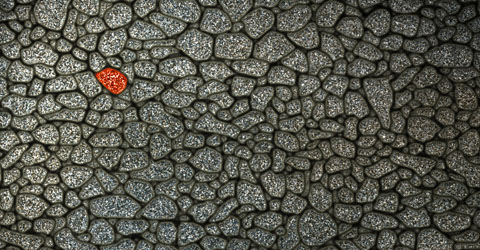Every once in a while, a simple new idea pops up right in front of our eyes. So elegant and sublime is this idea, that one wishes it were more than just a concept. Now, BMW came up with a new concept for a car, rethinking what defines a car, taking the weight off the bodywork.
GINA stands for Geometry and Functions in ‘N’ Adaptations and refers to the flexible structure and look of the car. What the engineers at BMW did was to set aside the solid, static shell and have instead developed a concept where a fabric that covers the internal subframe. This flexible structure – made of metal and carbon fiber – is controlled by electro-hydraulic devices that allow the exterior shape of the car to be quite dynamic, bending, extending and moving to fit the contours of the moving substructure beneath it.
Discussion arises in what regards to resistance to impact, cloth flapping in the wind, damage by envious hooligans, etc. But, in the end of the day, BMW shows it is willing to present new concepts, instead of just keeping with the existing formulas.
Even if this is no more than a styling exercise, the exercise opens a whole new array of possibilities that may very well be integrated in all large/scale production vehicles a few years down the road. And it’s pushing the envelope beyond what was expected. And that should always be praised.
The effect from a design perspective is quite striking—and even if the GINA concept is mainly a styling exercise at the moment, it opens up some very cool possibilities down the track. Multistructural cars could be built on a platform that, at its core, simply encompasses a rolling chassis, engine and interior, as well as moving structural elements that change the shape of the car completely. If the fabric can be rolled up somehow inside the structure, there’s no reason why it wouldn’t be possible to design a sportscar that transforms into a hatch—or even a wagon—when extra carrying room is needed, finally allowing the sportscar to become a practical everyday vehicle as well.
Naturally, the flexible fabric would have to prove itself in terms of durability, resistance to tearing, puncture and road debris, road noise reduction and overall vehicle safety before GINA ever made it to the market, but it’s fair to say this is one of the most fascinating and fundamentally revolutionary design studies the auto world has seen for some years.
From a design point of view, a solid exterior means that a car’s design has to stay static, and features that need to be exposed have to generally remain revealed or behind doors or hatches. A flexible fabric covering, on the other hand, allows the exterior shape of the car to be quite dynamic, bending, extending and moving to fit the contours of the moving substructure beneath it.
For more info, visit BMW’s website for the project.

